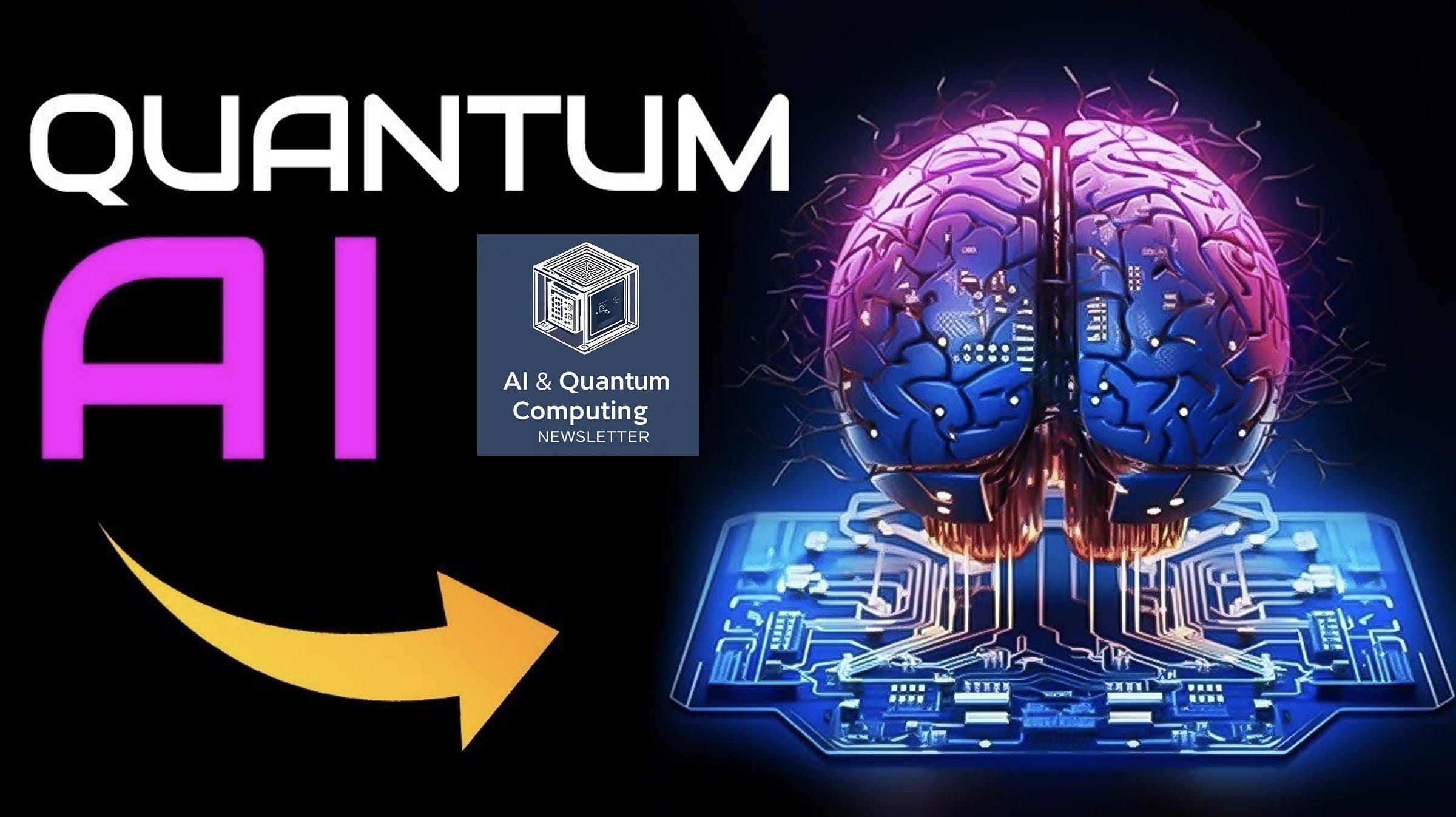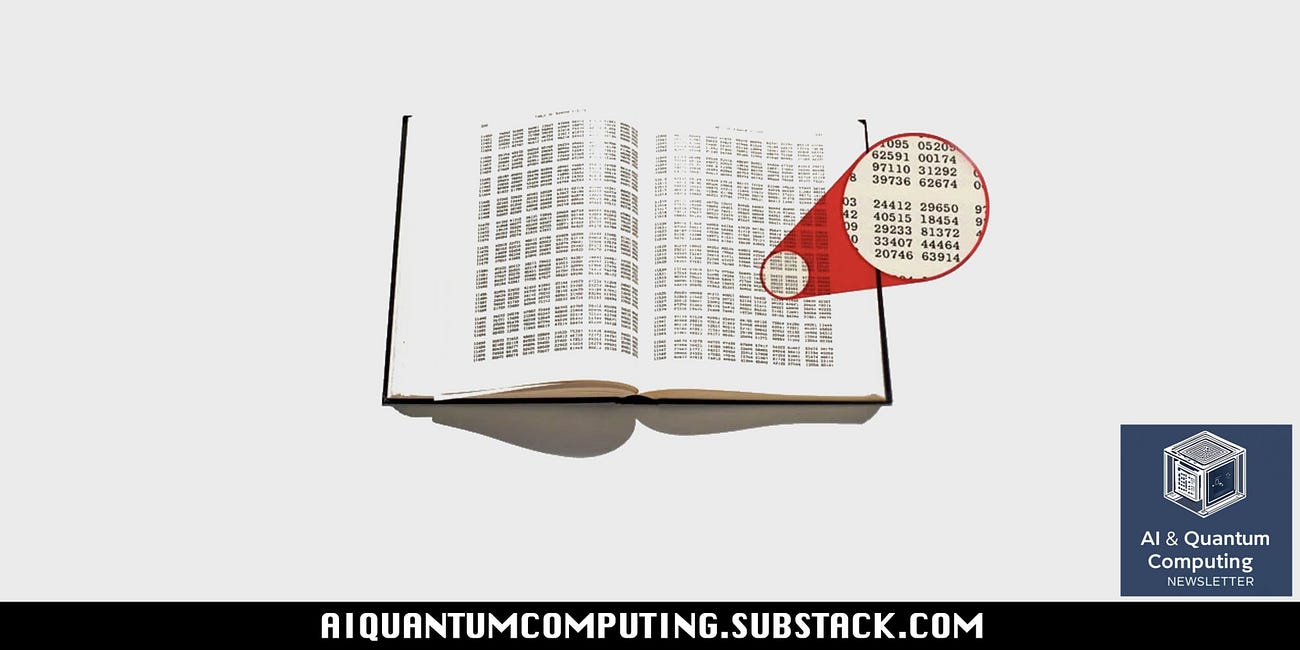Quantum AI: A Technological Revolution at the Crossroads Between AI and Quantum Computing.
Close-up of the coming revolution.
Quantum AI is at the heart of this newsletter, which I've been developing for a few months now, as it is the fruit of the encounter between quantum computing and artificial intelligence. Quantum AI promises to overcome the limitations of classical AI by harnessing the unparalleled power provided by qubits.
What is Quantum AI?
To understand quantum AI, we first need to imagine how a conventional computer works. Your smartphone or laptop processes information using bits, which can be 0s or 1s, like switches that turn on or off. These 0s and 1s are used to perform all operations one by one.
Quantum computing, on the other hand, uses qubits instead of conventional bits. And here's where the magic happens: a qubit can be both 0 and 1, thanks to a phenomenon known as superposition. It's as if, instead of having a switch either on or off, you could have it in both states simultaneously!
But what's in it for artificial intelligence? Conventional AI already excels in many fields, from image recognition to machine translation. However, it reaches its limits when faced with certain highly complex problems. For example, accurately simulating the behavior of molecules to discover new drugs is beyond the current capabilities of the best AIs.
This is where quantum computing comes in. Thanks to superposition and another quantum phenomenon called entanglement (which links qubits together), this technology can process an astronomical number of configurations in parallel.
For AI, this computational power opens up new horizons: analyzing colossal datasets in real time, detecting subtle correlations and hidden structures in the complexity of the world, and overcoming extremely complex modeling challenges that have until now eluded our most advanced computing capabilities. In short, quantum technology provides AI with an unprecedented capacity for exploration and analysis.
Quantum AI is, therefore, not necessarily a new type of AI with a radically different architecture from what we know. It's an incremental evolution, but one that can open the way to new applications, particularly in simulation and modeling.
But What Is Quantum Computing, Anyway?
Every time Google or IBM makes a breakthrough in quantum computing, you read a bunch of articles about how this emerging industry is going to change the world of the future. You watch videos telling you that the Bitcoin system will soon be in danger, just like the rest of the banking system, due to the incredible computational capabilities of quantum co…
Here's how quantum computers are already improving the AI we know
Improving classical AI models, especially LLMs, is thus the primary objective of quantum AI. But how do quantum computers improve our AI?
Imagine having to adjust a giant mixer with billions of knobs to achieve perfect sound. This is the challenge researchers face when training AI models. These systems have to assimilate huge amounts of data and adjust billions of internal parameters to perform optimally.
Using Origin Wukong, a powerful quantum computer, a team of Chinese researchers recently succeeded in drastically simplifying an AI model initially comprising a billion parameters.
Almost 75% of the parameters were removed, considerably reducing the model's complexity. Despite this enormous simplification, its performance increased dramatically. In mathematics, in particular, its results rose from 68% to 82%, a leap of 14 points.
This achievement shows the exceptional potential of quantum computing to redefine the performance of our current AI models. It opens the way to lighter, faster, and more accurate systems. Ultimately, it could enable us to have extremely powerful AIs running on low-power conventional computers.
In short, this Chinese breakthrough demonstrates that quantum AI is no longer confined to the theoretical work of a few researchers but is beginning to produce concrete results. The combination of conventional AI algorithms and quantum computing power is opening up new horizons. Although still in its infancy, the era of quantum AI seems well and truly underway.
Behind the scenes of Quantum AI
If the era of quantum AI now seems to have begun, it's thanks to the development of its basic building blocks: qubits. But how are these famous qubits made? Several technologies exist today. The most widespread use superconducting circuits cooled to extremely low temperatures, close to absolute zero (-273°C). Under these conditions, electrons can flow without resistance and retain their quantum properties.
Other approaches use trapped ions, photons (light particles), or neutral atoms. Each method has its advantages and challenges. For developers and researchers wishing to explore quantum AI without owning their quantum computer (which costs several million euros), there are several platforms accessible via the Internet.
The IBM Quantum Platform, for example, lets you use real quantum computers remotely. Microsoft Azure Quantum Elements is another solution that combines traditional and quantum computing power to solve complex scientific problems.
Quantum Computing pioneers
Several major technology players are investing heavily in quantum computing and AI, aware of their transformative potential. Google marked a turning point in 2019 with its Sycamore machine, which performed a specific calculation in just a few minutes that would have taken thousands of years on the most powerful classical supercomputer. This demonstration, although limited to a very specific problem, proved that quantum supremacy is possible.
IBM is also pursuing an ambitious strategy with its increasingly powerful quantum processors. From Eagle with its 127 qubits to Condor with its 1121 qubits, the company is constantly pushing back the limits of the number of functional qubits. At the same time, the company makes Qiskit available to researchers and developers. This is an open-source development kit that enables them to explore quantum computing.
Europe is not to be outdone in this technological race. French company Pasqal stands out with its neutral-atom quantum computer technology, which offers a different and promising approach. Recently, Pasqal announced a partnership with Nvidia to combine French quantum expertise with the power of American graphics processors, specially designed for AI.
In recent years, advances have accelerated on several fronts: increasing the number of qubits, reducing calculation errors, and improving coherence times (the time during which a qubit retains its quantum properties).
Obstacles in the path of Quantum AI
Despite these advances, quantum AI faces major challenges. The most fundamental concern is the fragility of qubits. Imagine trying to balance thousands of spinning tops at the same time: at the slightest disturbance, they fall over. Qubits are highly sensitive, for example, to vibrations, electromagnetic fields, and temperature variations.
Material constraints also pose major challenges. Superconducting qubit systems require temperatures close to absolute zero. This calls for costly and complex installations. What's more, transferring data to or from a quantum computer remains relatively slow.
Beyond the technical obstacles, the adoption of quantum AI is hampered by the lack of trained specialists. Mastering this field requires skills in quantum physics, computer science, and artificial intelligence - a rare combination. Companies that invest today in training their teams will have a decisive advantage when the technology reaches maturity, probably in around ten years' time, according to the experts.
The future of Quantum AI
The next few years will certainly see a gradual evolution of quantum AI. However, experts estimate that it will take at least another 15 years to develop fully fault-tolerant quantum computers. And capable of performing complex calculations without being disturbed by errors.
In the meantime, the hybrid approach, combining classical and quantum computing, will continue to make headway. These mixed systems should already enable significant advances in fields such as pharmaceutical research, materials science, and energy optimization.
The rise of quantum AI also raises important ethical and societal questions. For example, sufficiently powerful quantum computers could one day break the encryption systems that currently protect our online communications and transactions. This is why researchers are already developing “post-quantum cryptography” capable of withstanding future quantum attacks.
Another concern is equity of access to these technologies. If quantum AI remains the preserve of a few large companies or nations, is there not a risk of creating a new digital divide? Initiatives such as making quantum computers available via the cloud or developing accessible training courses will be essential to democratize these advances. And to ensure that their benefits reach as many people as possible.
Functional Quantum Computers Soon Within Reach Thanks to a Major Breakthrough in Atomic Qubits.
A decisive step towards the realization of fully functional quantum computers appears to have been taken. Engineers have developed a novel technique for positioning individual atoms in a silicon crystal with near-perfect precision. By significantly stabilizing the atoms used as qubits, this breakthrough paves the way for more reliable and easily scalabl…
A Trapped-Ion Quantum Processor Generates the First "Truly Random" Number.
You've probably all waited for the expression “it's random” several times in your life. The phrase is frequently used to describe unpredictable situations, but true randomness, in physics as in mathematics, has long remained an elusive concept.
Bitcoin Core 29.0: A Complete Roundup of New Features.
Let's look beyond economic, financial, and geopolitical issues to the fundamental infrastructure that will ensure the long-term success of the Bitcoin revolution.





